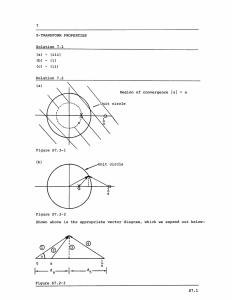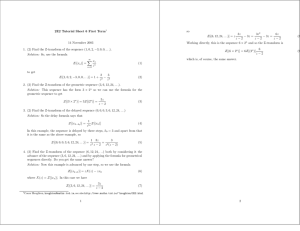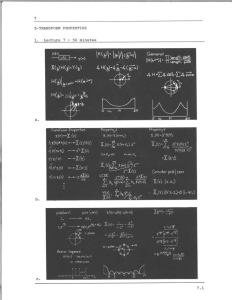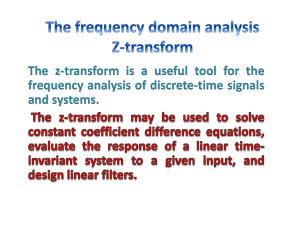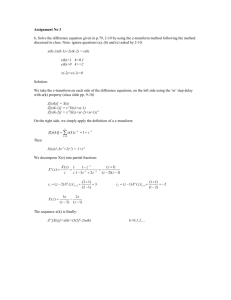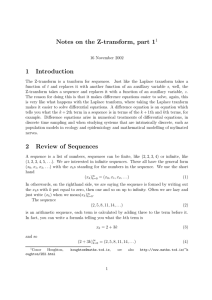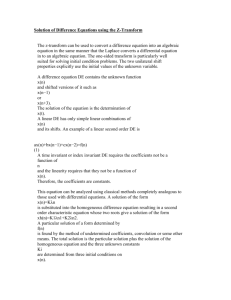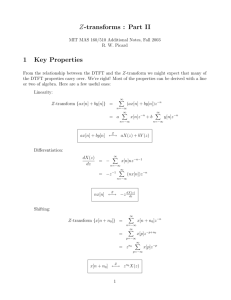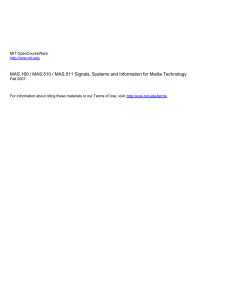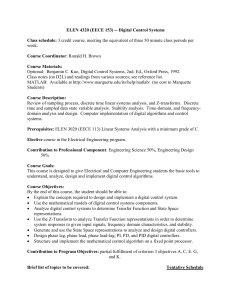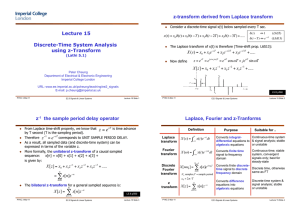g Inv.rse ipole 6
advertisement
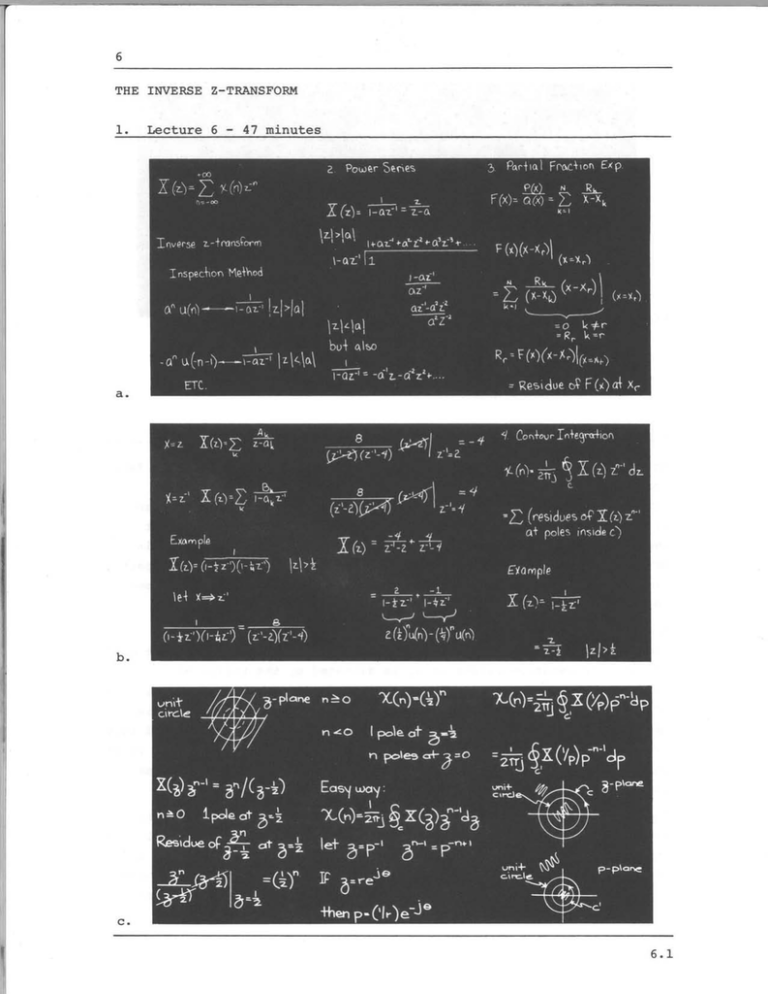
6 THE INVERSE Z-TRANSFORM 1. Lecture 6 - 47 minutes Inv.rse -trondorm -' CkIn-)C -~~~ ETC. A Exam olp b. i ipole nAo C at g . 6.1 d. Correction (Fig. d.): IpI < 2 not IpI < 1/2. 2. The region of convergence of X(l/p) is Comments This lecture presents several techniques for obtaining a sequence from its z-transform. The primary focus is on informal methods. The first of these, referred to as the inspection method corresponds to utilizing the fact that simple z-transforms and the sequences that generate them are recognizable by inspection. An extension of this method consists of expanding a more complicated z-transform in a partial fraction expansion and then recognizing the sequences that correspond to the individual terms. A somewhat different method for obtaining the inverse z-transform consists of expanding the z-transform as a power series, utilizing either positive or negative values of z, as dictated by the region of convergence and recognizing the coefficients in the series expansion as corresponding to the sequence values. One of the drawbacks to this method is that except in simple cases it does not lead to a closed form expression for the sequence. The major advantage with it is that it is more easily applied to z-transform expressions that are non-rational functions of z than are other methods. The final method presented in this lecture is the use of the formal inverse z-transform relationship consisting of a contour integral in the z-plane. This contour integral expression is derived in the text and is useful, in part, for developing z-transform properties and theorems. The mechanics of evaluating the inverse z-transform rely on the use 6.2 An important point stressed in the lecture is the of residue calculus. fact that the inverse z-transform integral is valid for both positive and negative values of n. However, for n negative there are multiple order poles introduced at the origin, the evaluation of the residues for which is cumbersome. In the lecture a procedure for avoiding this through a substitution of variables is introduced. 3. Reading Text: 4. Sections 4.3 (page 165) and 4.5. Problems Problem 6.1 Listed below are several z-transforms. sequences to which they correspond. Determine by "inspection" the (i) X(z) = 1; IzI < ­ (ii) X(z) = z3 zI < 0 (iii) X(z) = (iv) X(z) = 1z| 1-az > _ |al < |al ;zj 1-az = -2z- X(z) (v) 2 + 1 + 2z; izI < + Problem 6.2 Listed below are three z-transforms. For each determine the inverse z-transform by using contour integration, and again by using a partial fraction expansion. 1 _zi 1+lz-2 2 (i) X(z) = (ii) X(z) = (1 -1 > -l - [z+z l (iii) X(z) = 1-2z~-lI 1 2 + jz- + jz-2 |z| >1 |z > z -- 22 Problem 6.3 By using a power series expansion determine a sequence x(n) whose z-transform is X(z) = ez 6.3 * Problem 6.4 Given here are four z-transforms. Determine which ones could be the transfer function of a discrete linear system which is not necessarly stable but for which the unit-sample response is zero for n < 0. Clearly state your reasons. (a) (1 z-1 2 (1 - (b) (z - 1)2 (c) (z (d)( - _ )5/ z - 1 6 ) z~1). 2 )6 1)5 z - 2 * Problem 6.5 In Sec.4.5 of the text we discussed the fact that for n< 0 it is often more convenient to evaluate the inverse transform relation of Eq. (4.67) of the text by using a substitution of variables z=p~1 to obtain If the contour of integration is the unit circle, for Eq. (4.74). example, this has the effect of mapping the outside of the unit circle to the inside, and vice versa. It is worth convincing your­ self, however, that without this substitution, we can obtain x(n) for n < 0 by evaluating the residues at the multiple-order poles at z = 0. Let X(z) 1 = 1 -z where the region of convergence includes the unit circle. Determine x(0), x(-l), and x(-2) by evaluating Eq. (4.67) explicitly, obtaining the residue for the poles at z = 0. (a) (b) Determine x(n) for n > 0 by evaluating expression (4.67) and for n < 0 by evaluating Eq. 6.4 (4.74). MIT OpenCourseWare http://ocw.mit.edu Resource: Digital Signal Processing Prof. Alan V. Oppenheim The following may not correspond to a particular course on MIT OpenCourseWare, but has been provided by the author as an individual learning resource. For information about citing these materials or our Terms of Use, visit: http://ocw.mit.edu/terms.

